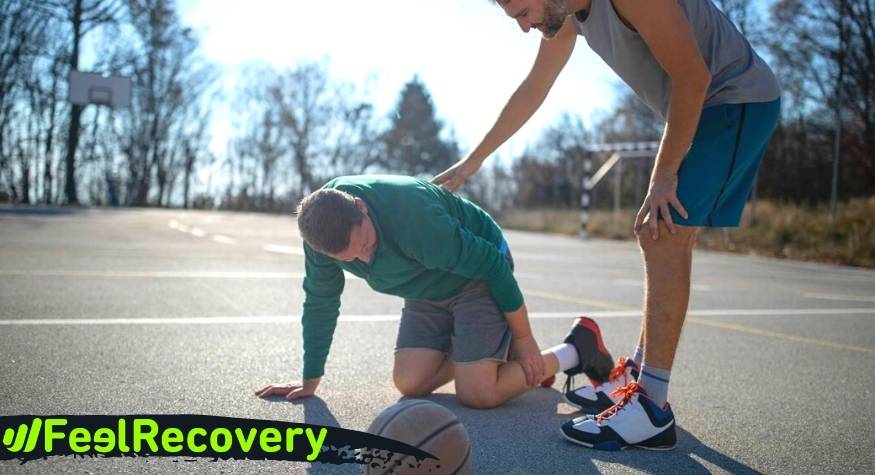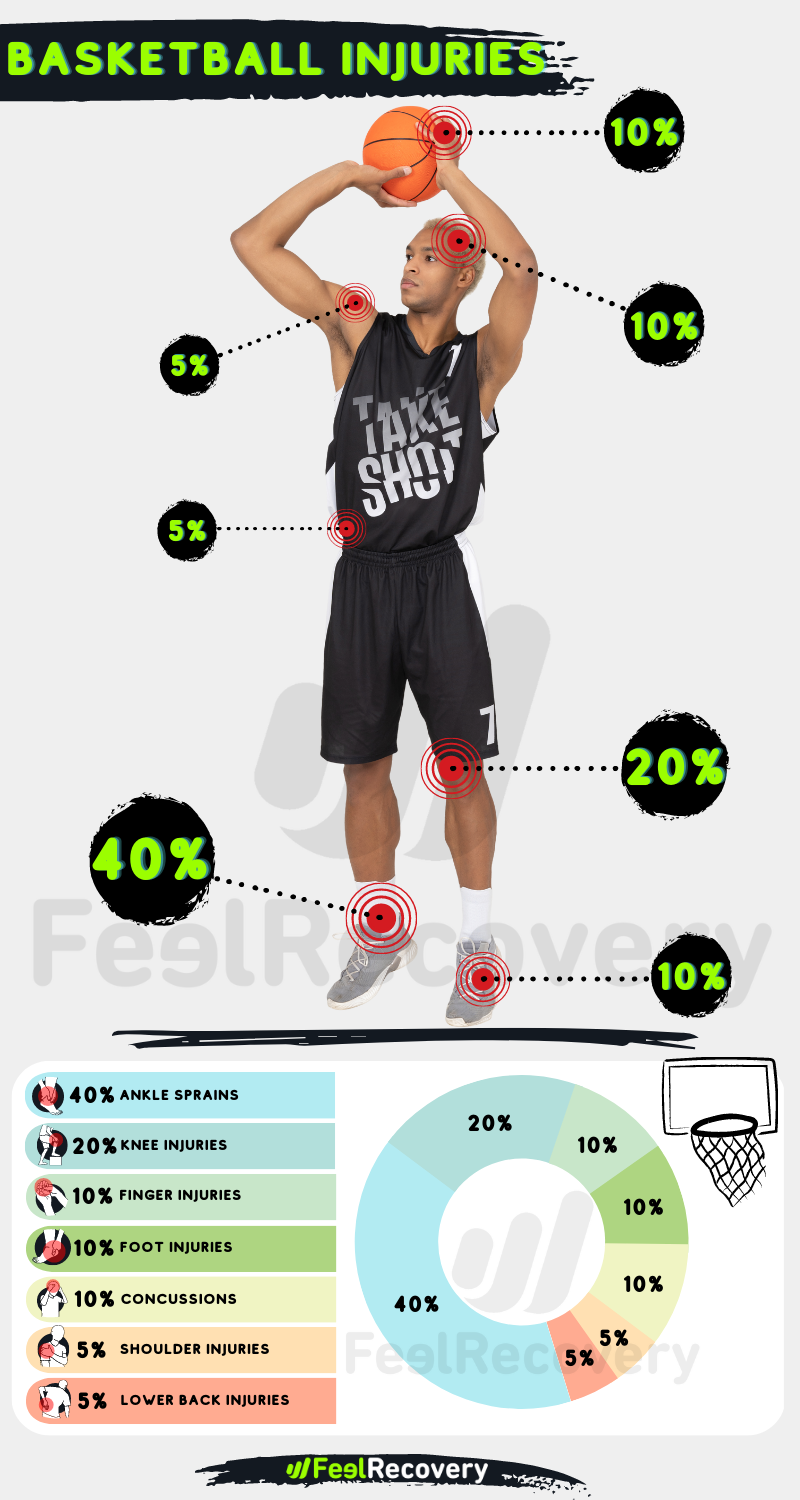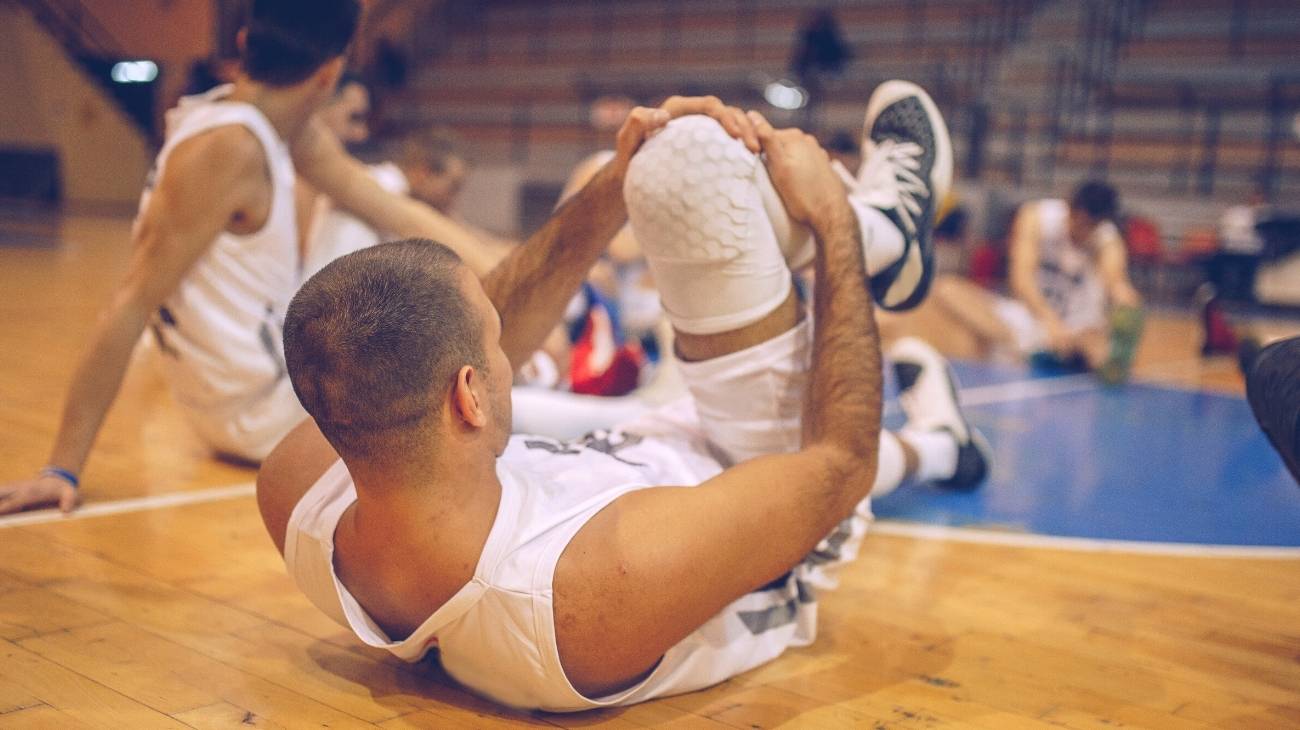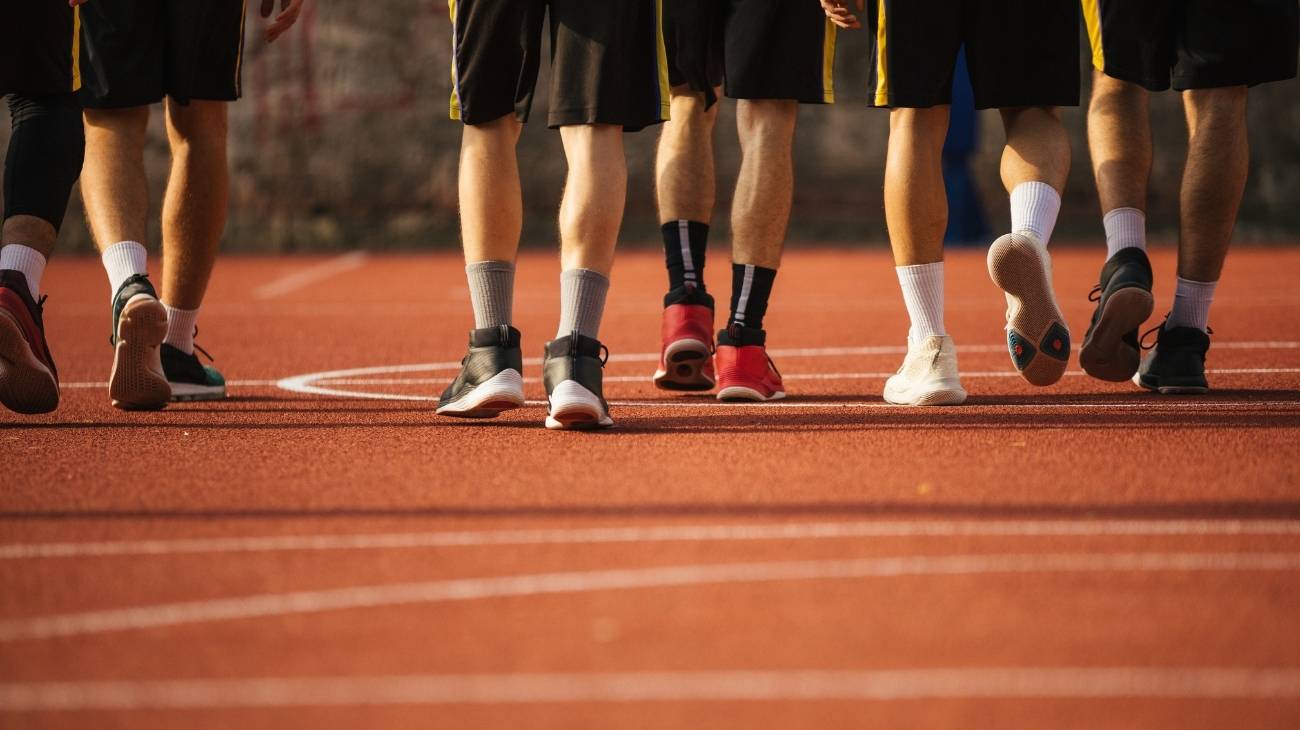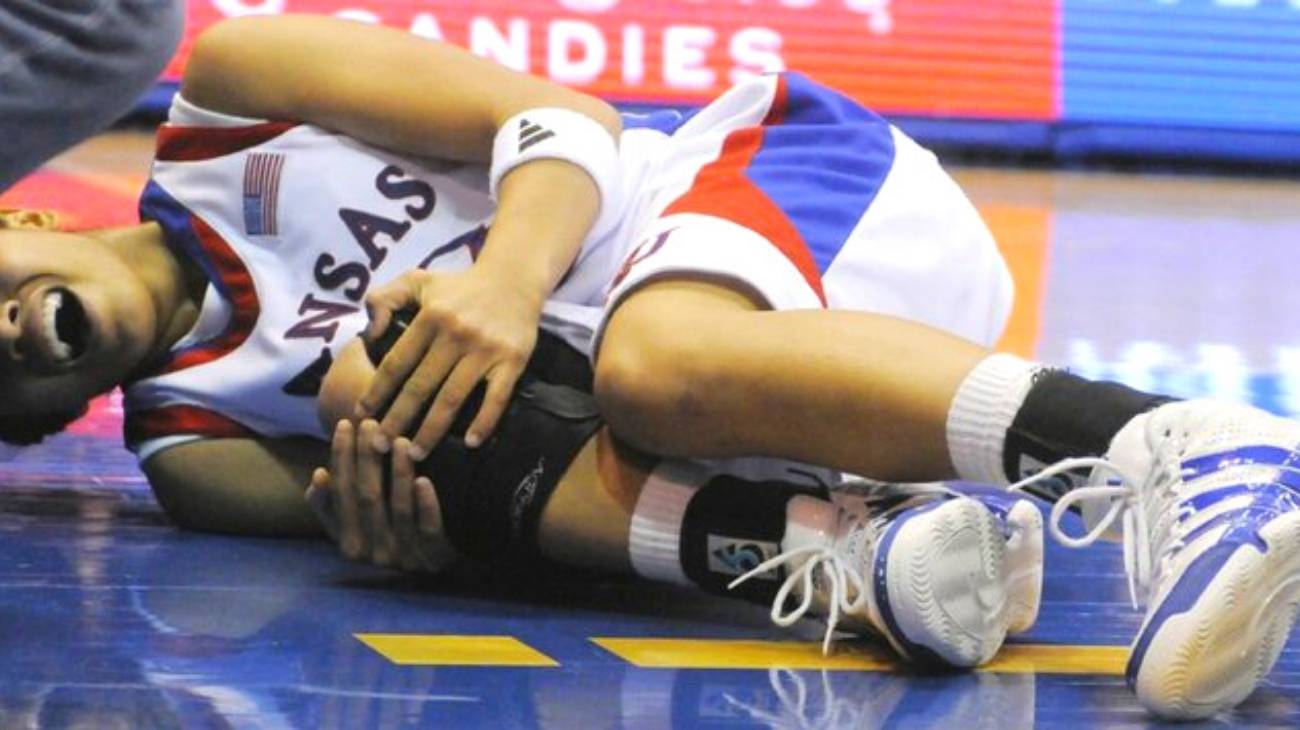Injuries are the worst thing that could happen to any professional or amateur athlete. That is why it is important that if you play basketball you know the most common methods used for the treatment of any type of injury you may suffer in both the lower and upper body.
In this article we will show you the main types of injuries and which are the most commonly used surgical treatments when the ailment requires it, as not all of them require this type of measures but physiotherapy treatment is sufficient for recovery.
What are the most common types of injuries when playing basketball?
Between jumps, turns, hits and friction, it is common for basketball players to have wear and tear on their joints, muscles, ligaments and bones. If you've taken up the sport and are passionate about it, be aware of the possible ailments you may have:
- Achilles tendon tendonitis: the constant poking and cutting that basketball players do takes the Achilles tendon, which connects the heel bone to the back of the calf, to the extreme, causing it to become inflamed over time and lead to tendonitis that causes a lot of pain and considerably limits the power of the kick.
- Jumper's knee: this is an injury to the patellar tendon that occurs when the tendon becomes inflamed, which is usually caused by the wear and tear of constant jumping while scoring and shooting. It is a minor injury, which only causes some discomfort, but physical activity must be stopped in order for the tendon to recover, otherwise there is a risk of rupturing the tendon, which may require surgery.
- Ankle sprain: this is a sprain that causes the ligaments and joint to be pushed to the limit by an unnatural movement of the ligaments, which can occur when landing badly after a jump to score or trying to block an opponent's shot. This can result in anything from simple swelling in the tissue from the movement, which will be accompanied by pain, to a complete rupture of the ligaments that will almost certainly require open surgery to fix the problem.
- Finger sprains: Finger sprains are one of the most common injuries, occurring from receiving a pass with the hand that causes the power of the ball to bend the fingers until they are twisted and can even become dislocated. Usually it is no more than a simple sprain but sometimes the damage is enough to fracture a metatarsal.
- Muscle trauma: occurs when the muscle takes a severe blow. It is usually treated with some ice, but can sometimes lead to muscle fractures that require a more complex recovery that can range from physiotherapy and sports massage to undergoing surgery.
Best products for basketball injury recovery
Bestseller
-
2 Ankle Compression Sleeve (Black/Gray)
£17,50 -
2 Ankle Compression Sleeve (Green/Navy)
£17,50 -
2 Ankle Compression Sleeve (Pink/Bordeaux)
£17,50 -
2 Calf Compression Sleeve (Black/Gray)
£17,50 -
2 Calf Compression Sleeve (Green/Navy)
£17,50 -
2 Calf Compression Sleeve (Pink/Bordeaux)
£17,50 -
2 Elbow Compression Sleeve (Black/Gray)
£17,50 -
2 Elbow Compression Sleeve (Green/Navy)
£17,50 -
2 Elbow Compression Sleeve (Pink/Bordeaux)
£17,50 -
2 Knee Compression Sleeve (Black/Gray)
£17,50 -
2 Knee Compression Sleeve (Green/Navy)
£17,50 -
2 Knee Compression Sleeve (Pink/Bordeaux)
£17,50 -
2 Patella Knee Strap (Black/Gray)
£12,95 -
2 Patella Knee Strap (Green/Navy)
£12,95 -
2 Patella Knee Strap (Pink/Bordeaux)
£12,95 -
2 Thigh Compression Sleeve (Black/Gray)
£17,50 -
2 Thigh Compression Sleeve (Green/Navy)
£17,50 -
2 Thigh Compression Sleeve (Pink/Bordeaux)
£17,50 -
Acupressure Mat and Pillow (Black/Gray)
£44,95 -
Acupressure Mat and Pillow (Green/Navy)
£44,95 -
Acupressure Mat and Pillow (Pink/Bordeaux)
£44,95 -
Acupressure Pillow (Black/Gray)
£21,52 -
Acupressure Pillow (Green/Navy)
£21,52 -
Acupressure Pillow (Pink/Bordeaux)
£21,52 -
Foot Massage Roller for Plantar Fasciitis (Black)
£17,50 -
Foot Massage Roller for Plantar Fasciitis (Green)
£17,50 -
Foot Massage Roller for Plantar Fasciitis (Pink)
£17,50 -
High Density Foam Roller for Muscle (Black/Gray)
£24,95 -
High Density Foam Roller for Muscle (Green/Navy)
£24,95 -
High Density Foam Roller for Muscle (Pink/Bordeaux)
£24,95 -
Ice Massage Roller Ball (Black)
£34,95 -
Ice Massage Roller Ball (Green)
£34,95 -
Ice Massage Roller Ball (Pink)
£34,95 -
Microwaveable Wheat Bag for Pain Relief (Hearts)
£17,50 -
Microwaveable Wheat Bag for Pain Relief (Oxford)
£17,50 -
Microwaveable Wheat Bag for Pain Relief (Sport)
£17,50 -
Pack 2 in 1: Foam Roller High + Soft Density (Black/Gray)
£24,95 -
Pack 2 in 1: Foam Roller High + Soft Density (Green/Navy)
£24,95 -
Pack 2 in 1: Foam Roller High + Soft Density (Pink/Bordeaux)
£24,95 -
Shoulder Support Brace (Black)
£21,95 -
Shoulder Support Brace (Green)
£21,95 -
Shoulder Support Brace (Pink)
£21,95 -
Soft Density Foam Roller for Recovery (Black)
£24,95 -
Soft Density Foam Roller for Recovery (Green)
£24,95 -
Soft Density Foam Roller for Recovery (Pink)
£24,95 -
Sport Compression Socks (1 Pair) (Black/Gray)
£17,50 -
Sport Compression Socks (1 Pair) (Green/Navy)
£17,50 -
Sport Compression Socks (1 Pair) (Pink/Bordeaux)
£17,50 -
Trigger Point Massage Stick (Black)
£12,95 -
Trigger Point Massage Stick (Green)
£12,95 -
Trigger Point Massage Stick (Pink)
£12,95 -
Wrist Brace (Black/Gray)
£17,50 -
Wrist Brace (Green/Navy)
£17,50 -
Wrist Brace (Pink/Bordeaux)
£17,50
How to apply the RICE therapy to treat first aid injuries in basketball?
The aim of this therapy is to provide the primary care needed by the player after an injury to minimise the short, medium and long-term damage. Formerly known as RICE, the PRICE therapy is the update of these techniques that seeks to protect the affected fibres, joints, bones, ligaments and tendons:
- Protection: The affected area or limb should be protected. If necessary, the entire limb is immobilised, thus restricting possible movements that could complicate the injury. It is unlikely to be known at this stage whether the injury is a sprain, strain or partial or total fracture. Assistance should always be provided by a professional, as a bad manoeuvre can be detrimental to the athlete.
- Rest: Sometimes we think that the pain is temporary and you will be able to continue playing, however, even if it is a minor injury, it can get worse. The best thing to do is to rest and wait for the professional to take his or her time to determine the severity of the issue. If you want to be at 100% today, tomorrow or in the future, rest as the doctor tells you at that time.
- Ice: This element alone helps to make the pain more bearable and helps to reduce the intensity of the swelling. Applied directly to the skin it can cause burns, preferably using towels or a compress for 15 to 20 minutes, then you can rest for 30 minutes.
- Compression: This is one of the most commonly used methods when treating an injury in the first instance. It consists of bandaging the affected area and it is recommended that this is done by a professional, as with the previous steps. Avoid exerting too much pressure. The bandaging mechanism evolved into an adhesive system that makes it easier for the patient to obtain forces from other muscles to move the injured area.
- Elevation: When the affected area is elevated, venous return is ensured. The height should be equal to or higher than the heart. What are we looking for in this step? The blood circulates better through the injury, which results in a reduction of swelling.
Surgical treatments to cure severe or chronic injuries in basketball players
When prevention and primary care are not sufficient to address or prevent injuries, then the injury is likely to be severe or chronic. In these cases, surgery is the next step.
Shoulder injuries
shoulder injuries are among the most common as the heavy contact between players is often cushioned by this joint. In case of severe damage, the following procedures are performed:
- Shoulder arthroscopy: This is a procedure in which a small tube with a camera is inserted to observe the damage to the joint and then proceed to repair the damage without the need to make a large incision that requires a longer recovery. This procedure is used to treat chronic problems such as osteoarthritis or ligament damage caused by severe sprains or dislocations.
- Open shoulder surgery: This is often used to repair severe damage, especially to the rotator cuff, or to repair a broken collarbone that requires the insertion of fixation instruments such as pins. Depending on the problem to be solved, a large incision is made under general anaesthesia and the damage is repaired.
Knee injuries
The knee is undoubtedly the most problematic joint for athletes of any discipline, and basketball is no exception. Except for minor sprains, injuries in this area always require surgical intervention.
- Knee arthroscopy: This is an operation in which only a small cut is made to insert an arthroscope that allows the doctor to repair the damage in the least invasive way possible. It is common for treating serious injuries such as ligament or meniscus reconstructions.
- Cruciate ligament repair: An operation is performed under general anaesthesia in which tissue grafts are made to reconstruct the entire ligament. This involves drilling holes in the tibia and femur to replace the torn ligament and insert the graft, which is then fixed with pins or other fixation instruments.
Ankle, foot and leg injuries
As the feet are the part of the body where all the weight of the body is supported, it is normal for injuries to occur in this area that lead to an intervention of this type.
- Achilles tendon reconstruction: in these cases an open operation is performed in which the tendon is reattached using stitches that will hold it in place until it regenerates naturally, which usually takes several weeks. After that, the area is immobilised for a period of time to be determined by the specialist and physiotherapeutic treatment is given to stimulate recovery.
- Calcaneal spur surgery: under local anaesthesia, a cut is made in the area of the heel where the heel spur is located in order to file it down and reduce it as much as possible, so that with physiotherapy treatment it can be completely reduced. This surgery is more aimed at reducing pain than curing the spur itself, and is considered an outpatient procedure so you can almost certainly go home to recover the same day of surgery.
References
- Harmer, P. A. (2005). Basketball injuries. Epidemiology of pediatric sports injuries: Team sports, 49, 31-61. https://www.karger.com/Article/Abstract/85341
- Newman, J. S., & Newberg, A. H. (2010). Basketball injuries. Radiologic Clinics, 48(6), 1095-1111. https://www.radiologic.theclinics.com/article/S0033-8389(10)00121-1/fulltext
- Trojian, T. H., Cracco, A., Hall, M., Mascaro, M., Aerni, G., & Ragle, R. (2013). Basketball injuries: caring for a basketball team. Current sports medicine reports, 12(5), 321-328. https://journals.lww.com/acsm-csmr/Fulltext/2013/09000/Basketball_Injuries___Caring_for_a_Basketball.13.aspx
- Borowski, L. A., Yard, E. E., Fields, S. K., & Comstock, R. D. (2008). The epidemiology of US high school basketball injuries, 2005–2007. The American journal of sports medicine, 36(12), 2328-2335. https://journals.sagepub.com/doi/abs/10.1177/0363546508322893
- Zelisko, J. A., Noble, H. B., & Porter, M. (1982). A comparison of men's and women's professional basketball injuries. The American journal of sports medicine, 10(5), 297-299. https://journals.sagepub.com/doi/abs/10.1177/036354658201000507
- Dick, R., Hertel, J., Agel, J., Grossman, J., & Marshall, S. W. (2007). Descriptive epidemiology of collegiate men's basketball injuries: National Collegiate Athletic Association Injury Surveillance System, 1988–1989 through 2003–2004. Journal of athletic training, 42(2), 194. https://www.ncbi.nlm.nih.gov/pmc/articles/PMC1941286/
- Bolotin, A., & Bakayev, V. (2016). Efficacy of using isometric exercises to prevent basketball injuries. Journal of Physical Education and Sport, 16(4), 1177. http://efsupit.ro/images/stories/nr4.2016/art188.pdf
- Padua, E., D’Amico, A. G., Alashram, A., Campoli, F., Romagnoli, C., Lombardo, M., ... & Annino, G. (2019). Effectiveness of warm-up routine on the ankle injuries prevention in young female basketball players: a randomized controlled trial. Medicina, 55(10), 690. https://www.mdpi.com/1648-9144/55/10/690
- Sonzogni Jr, J. J., & Gross, M. L. (1993). Assessment and treatment of basketball injuries. Clinics in sports medicine, 12(2), 221-237. https://europepmc.org/article/med/8481963
- McKay, G. D., Goldie, P. A., Payne, W. R., Oakes, B. W., & Watson, L. F. (2001). A prospective study of injuries in basketball: a total profile and comparison by gender and standard of competition. Journal of Science and Medicine in Sport, 4(2), 196-211. https://www.sciencedirect.com/science/article/abs/pii/S144024400180030X

